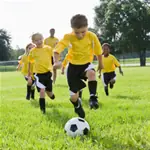Let's start with the plain truth: Children are not very active. Children today are more sedentary, fatter and unhealthier than previous generations. Today, one in three American children are considered overweight or obese. Not only does increased weight have a lasting effect on a child's psychological well being, an obese child has an increased risk of developing asthma, type 2 diabetes, sleep apnea and decreased health-related quality of life.
There is no debate that regular physical activity is essential for normal development and reduced risk of disease later in a child's life. Additionally, studies show that active kids become active adults.Quick Tip
Despite the compelling evidence for increased physical activity in children and adolescents, it is difficult not to become confused or overwhelmed with the magnitude of information regarding children and exercise. Like adults, there is no one-size-fits all approach to exercise. The purpose of this article is to address the basics regarding children and exercise. Most importantly, it sheds light on one of the greatest aspects of exercise that adults can also benefit from-in more instances than not, "play" is considered exercise. How can anyone resist?
How Much Should a Child Exercise?
The United States Department of Health and Human Services states that, in general, youth should participate in 60 minutes or more of planned physical activity every day to promote overall health and wellness. This does not include the additional 30 to 60 minutes of 'free play' that is also recommended for toddlers through school aged children. The suggested intensity of planned physical activity is moderate to vigorous, which can be interpreted as a 5 to 10 on a scale of 1 to 10 with one being no effort (sitting) and 10 being maximal effort.
Since free play is at the child's discretion, while it may not fit into any specific type of exercise, it does exercise a child's imagination, exploration and creativity. Both planned physical activity and free play are important for a child's development.
 Find activities for kids near you.
Find activities for kids near you.
- 1
- of
- 4









Discuss This Article